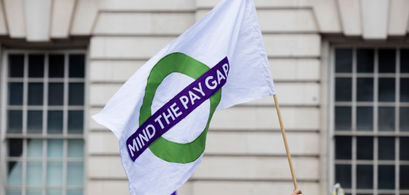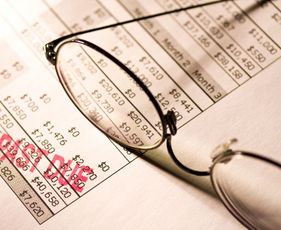- Search interest in the Gender Pay Gap doubled between 2017 and 2022.
- The average Gender Pay Gap across all professions dropped just 19% during the same period. [2017 to 2022]
- Today, the pay gap is highest among healthcare professionals (19.7%), while the gap actually favours women in Community and civil enforcement occupations (where they earn 8.4% more.)
Public awareness is the key to progress on cultural issues. But there is an important difference between knowledge and action, especially for systemic problems - as the UK’s Gender Pay Gap figures demonstrate perfectly.
New data analysed by Moneyzine.co.uk can reveal that the UK is making considerable progress on the Gender Pay Gap - but that progress is nowhere near equal to the increase in public interest around the issue.
Public awareness has grown
The Gender Pay Gap is one of the most hotly debated topics in modern culture, but the problem has often been obscured by a lack of public clarity on the issue. In fact, a 2018 poll found that 70% of Brits didn’t know what the Gender Pay Gap was.
Since then, interest and awareness has increased massively. Google recently reported that the number of searches related to the Gender Pay Gap had doubled between 2017 and 2022. An updated poll found that the general public’s knowledge of the Pay Gap had indeed increased during that period - with nearly half of the population having a correct definition of it in 2022.
But there’s still a long way to go
In the same period, the UK’s total Pay Gap was reduced by 19% - from 17.2 to 13.9. For those aged 22-29, the gap fell by nearly a third between 2017 and 2022 (from 6.6 to 4.6); for 18-21 year olds, it more than halved, suggesting a trajectory that would see the gap eradicated altogether by 2027.
Perhaps most strikingly, the pay gap for part-time employees has swung from 4.6 to 0.2, meaning there is almost no difference between the earnings of men and women in part-time employment.
Gender Pay Gap by Age Group from 2017 to 2022
Age | 2017 | Mean Gender Pay Gap | 2022 | Mean Gender Pay Gap |
18-21 | 5.1 | 2.2 |
22-29 | 6.6 | 4.6 |
30-39 | 10.3 | 9.9 |
40-49 | 21.4 | 16.8 |
50-59 | 23.3 | 18.1 |
60+ | 22.5 | 19 |
But there is still plenty of progress to be made. Today, the pay gap is highest among health professionals (19.7%), Business and public service associate professionals (17.4), Process, plant and machine operatives (17), Culture, media and sports occupations (16.7) and Corporate managers and directors (15.1). While just two occupation categories have negative Gender Pay Gaps - Secretarial work (0.5) and Community and civil enforcement occupations (-8.4).
What does this mean?
While progress has been made, it is hard not to compare the two findings - a 100% increase in searches with a 19% decrease in pay discrepancy - and wondering if public awareness is enough. While greater scrutiny of payrolls and transparency from organisations is important, tackling the systemic issue may require deeper cultural changes.
This data is encouraging, showing that the public actually cares about the issue. But fixing it will require the media to do more than cover the problem - it must actually point us towards meaningful solutions.Jonathan Merry, CEO of Moneyzine.co.uk
Contributors
.jpg)



.jpg)
.jpg)

.jpg)